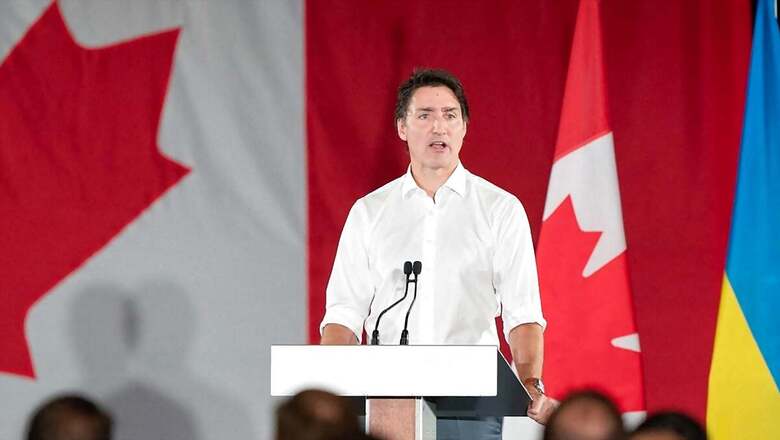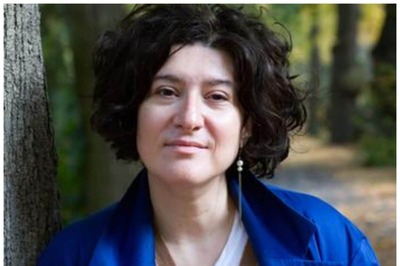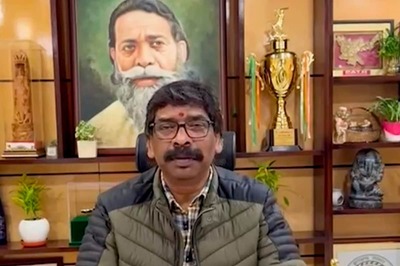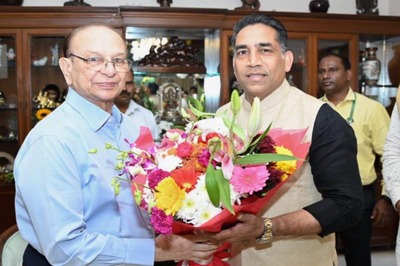
views
Amid the ongoing diplomatic row between India and Canada, the US envoy to Canada said that the Trudeau administration’s claim of a link between the Indian government’s “agents” and the killing of separatist Sikh leader Hardeep Singh Nijjar was based on “shared intelligence among Five Eyes partners”.
Canadian Prime Minister Justin Trudeau sparked a row on Monday, claiming that Ottawa had credible intelligence linking Indian agents to Nijjar’s killing outside a Sikh temple in Surrey, British Columbia, on June 18.
India, however, dismissed the allegations calling them “absurd and motivated”.
Five Eye Provided Info To Canada?
“I will say this was a matter of shared intelligence information. There was a lot of communication between Canada and the United States about this, and I think that’s as far as I’m comfortable going,” David Cohen, the US Ambassador to Canada, told CTV News in an interview.
However, Cohen refrained from detailing the type of intelligence shared by the Five Eyes partners with the Canadian government.
Meanwhile, The New York Times, quoting Western-allied officials also reported that US intelligence agencies provided information that led Canada to hold India responsible for Khalistan leader Hardeep Singh Nijjar’s killing.
Following Njjar’s killing on June 18 outside a Sikh temple in British Columbia, “American spy agencies offered their Canadian counterparts context that helped Canada conclude that India had been involved,” the report said.
However, the two allied officials, who spoke to the newspaper on the condition of anonymity, said the “most definitive intelligence” on the killing was collected by Canada.
The US remained unaware of the plot, or evidence linking India’s involvement in it, until after operatives had killed Nijjar, allied officials said, adding that if US officials had they would have immediately informed Ottawa under the intelligence agencies’ “duty to warn” doctrine.
Further, they said that the Canadian officials had also warned Nijjar, but “had not told him that he was the target of an Indian government plot”.
“The United States routinely, and automatically, shares huge amounts of intercepted communications with its closest intelligence partners, including Canada. But the contextual information about the killing was shared deliberately as part of a package of various intelligence streams,” a report by The Times said.
What Is ‘Five Eyes’ and Who are alliance partners?
The Five Eyes Intelligence Oversight and Review Council (the Council), also known as FVEY, is an intelligence alliance comprising five countries, including–Inspector General of Intelligence and Security of Australia, the Office of the Communications Security Establishment Commissioner and the Security and Intelligence Review Committee of Canada, the Commissioner of Intelligence Warrants and the Office of the Inspector-General of Intelligence and Security of New Zealand, the Investigatory Powers Commissioner’s Office of the United Kingdom, and the Office of the Intelligence Community Inspector General of the United States.
As per a report by Moneycontrol, the alliance is led by the United States.
After World War II, the United States and the United Kingdom formalized the UKUSA agreement of 1946, which was expanded twice by 1956, and Canada, Australia, and New Zealand were included as members, according to a report by NDTV.
Norway, Denmark, and West Germany were also temporarily added to the alliance before it whittled down to its current members by 1955.
Purpose of Five Eyes
“It is recognised that the intelligence agencies of the Five Eyes countries cooperate operationally under formal or informal agreements and whereas each country has a variation of law on security of information or official secrets binding officials to secrecy, the Council Members commit to facilitating information sharing and collaboration between themselves,” read its charter.
The alliance countries reportedly share human intelligence, signal intelligence (SIGINT), as well as security, geospatial, and defence intelligence with each other.
The charter further said that the Council was established with the purpose of creating a forum where member countries may:
- Exchange views on subjects of mutual interest and concern;
- Compare best practices in review and oversight methodology;
- Explore areas where cooperation on reviews and the sharing of results is permitted where appropriate;
- Encourage transparency to the largest extent possible to enhance public trust;
- Maintain contact with political offices, oversight and review committees, and non-Five Eyes countries as appropriate.
US’ Stance
The NYT reached out to a White House spokesman who declined to comment. According to the report, the US officials were reluctant to discuss the killing because America wants to maintain a fine balance between both its allies.
US Secretary of State Antony Blinken has urged India to cooperate with Canada and ensure “accountability” over Nijjar’s killing.
Speaking to reporters on the sidelines of the UN General Assembly on Friday, Blinken said the US has been in touch both with India, with which it has warming ties, and Canada, a close ally.
“We want to see accountability. And it’s important that the investigation runs its course and leads to that result,” Blinken said.
India-Canada Diplomatic Row
After claiming that Indian agents played a role in the murder of Canadian citizen Nijjar on Canadian soil, Trudeau on Thursday called on India to cooperate on the investigation.
He said that Canada shared evidence on Nijjar’s killing with India “many weeks ago”.
Trudeau’s accusation has led to a diplomatic spat between India and Canada with New Delhi rejecting Ottawa’s claims as “absurd and motivated”, followed by tit-for-tat expulsions of senior diplomats and travel advisories.
“No specific information” has been shared by Canada on the case so far. “No specific information has been shared by Canada on this case, either then or before or after. We have, you know, as we have said, or I think we have made very clear, we are willing to look at any specific information,” the Minister of External Affairs said in a statement.
Nijjar, 45, was the chief of the banned Khalistan Tiger Force (KTF) and one of India’s most-wanted terrorists who carried a cash reward of Rs 10 lakh on his head.
(With IANS Inputs)




















Comments
0 comment